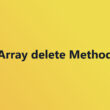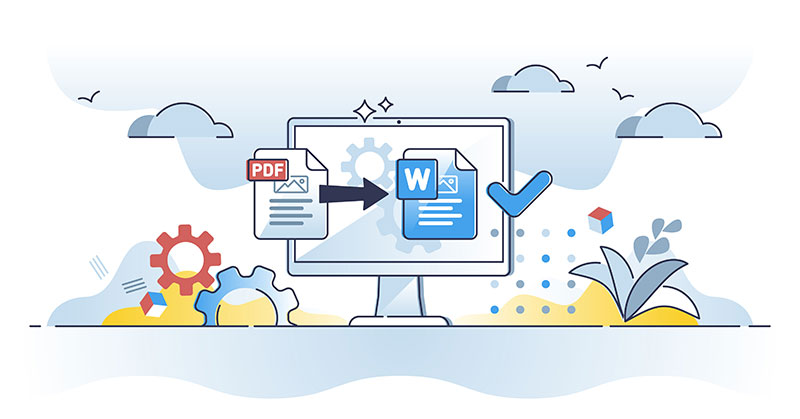How are customized programmatic solutions created?

Creating or developing customized programmatic solutions are projects that should be carried out by specific principles, which are collected in the form of a design methodology. The methodology itself is not enough, but it is necessary to ensure that large programming projects are completed on time, within budget, and following the intended scope.
The use of off-the-shelf software solutions, previously developed and tested on thousands of projects, allows a company to use the knowledge and experience built into a standard system over many years of development in a relatively short time.
Many companies also use customized solutions to complement standard systems to some extent. On the one hand, this allows you to get a solution that is very precisely tailored to your specific needs, created specifically for your company. On the other hand, it poses a great challenge for effective work organization and project management. Accurate description of requirements, progress monitoring, comprehensive testing, and documentation of the solution – these are the traditional “hard topics” associated with every software development project.
Why do you require knowledge of programmatic solutions?
In every field of activity, we can systematically improve the quality of our work by collecting experience and good practices (“which approaches worked before and which proved ineffective”) and developing work standards based on them. Of course, we should not learn only from our own mistakes, we should also use the experience of other companies and organizations, training, and books by recognized experts.
As a result of the systematic development of, for example, Custom Adtech Products, White Label SSP, White Label DSP, and White Label Ad Exchange solutions, a methodology is created that establishes a framework for planning and implementing projects, tracking progress, and documenting work. It facilitates communication as it introduces common terminology used by the participants in the software solution project. It supports the accumulation of knowledge and experience by teams from completed projects. As a result, subsequent projects are based on previously developed good standards and avoid the mistakes made earlier.
The elements of the methodology described in this article (phasing, role assignment, documentation) relate to the broad understanding of “business software development” – the development or extension of customized IT solutions for businesses or other organizations that support their internal processes or cooperation with contractors. Let’s look at the customized programmatic solutions meaning, which include the following:
- user interface, communication with other systems, reporting mechanisms, printouts and other messages sent to users, administration, and monitoring mechanisms
- most often uses a relational database to store the data required for the system operation
- developed in 3/4GL programming languages, such as Java, C#, C++, VB, SQL
- contains the user interface of a “traditional” desktop application, web application, or mobile application
However, it is important to pay attention to an individual approach when you want to buy customized programmatic solutions. For example, the Teqblaze team does not apply the methodology described here to the implementation of standard software, i.e., projects that focus on modeling business processes and then parameterizing and modifying standard systems.
Project phases
The main way to cope with the complexity of a programmatic solutions project is to divide the schedule and scope into parts. We divide the overall project schedule into phases that correspond to different types of work. There are five main stages in the Teqblaze software development methodology.
- At the project preparation stage, project teams are formally created. The project manager (we explain this and other project roles in detail below) defines the plans, working standards, and tools to be used in the project, and organizes other resources (e.g. project rooms, projectors, software licenses). Prepares an information package for other project participants so that they can effectively start their work from the beginning of the second phase of the project.
- The concept phase is dedicated to developing a detailed specification of your programmatic solution.
- During implementation, the main solution is developed – the project product, i.e., a new system or changes/extensions to an existing application. The implementation phase also includes tests provided by the BCC methodology.
- Preparation for production work is a set of measures to prepare for the launch of the application in the target environment. Depending on the specifics of the project, it may include one or more of the following activities: developing end-user instructions, training users, establishing administration procedures for the new application (for example, covering it with a backup system), transferring the solution to production servers, filling the system with the full set of data required to start work, and other activities specific to the system or organization (for example, auditing).
- The production phase begins when users in the organization start using the new system. It typically involves 2–6 weeks of user support by the development team until any issues that were not previously diagnosed during testing in the development environment are identified and resolved.
When is a requirement specification created?
Typically, a specification consists of two stages:
- The person initiating the project (either internally or by an external client) prepares a document outlining the goals and assumptions of the new project and the most important functional requirements (e.g., in the form of a request sent by the client). This document – after discussions and clarification of any uncertainties – is the starting point for project planning and estimating the project schedule and cost.
- During the conceptualization phase, conceptualization sessions are scheduled when the specification is finalized according to the requirements of the design methodology, as described in the previous section.
If the product owner/customer is unable to provide an initial concept (described in step 1) at the start of the project, a full requirements specification will be developed following step 2, but in this case, a binding project quote may not be generated until after the concept phase is complete.
The opposite is also possible, though rare: the specification in point 1 is so comprehensive that the team can move from the project preparation phase directly to the implementation phase (in the case of a simple solution/small project).
In doing so, here is a robust and high-quality approach to creating a software solution methodology for the individual needs of businesses around the world. Learn more about the capabilities and rationale from the Teqblaze team anytime.
Conclusion
In conclusion, the creation of customized programmatic solutions entails a structured approach guided by a well-defined methodology. Each project unfolds through distinct stages, from initial planning and requirements gathering to development, testing, deployment, and ongoing optimization. The importance of methodology cannot be overstated, as it ensures clarity of objectives, alignment with stakeholders, efficient resource allocation, and adherence to best practices. Through iterative cycles and feedback loops, teams refine their solutions, incorporating user insights and addressing evolving needs. Ultimately, successful programmatic solutions are not merely products of technological prowess but also of disciplined project management, fostering innovation, efficiency, and value delivery for businesses and their audiences alike.
- Hiring Professionals to Develop Tech Products: A How-to Guide - June 30, 2024
- Stream On Demand: Entertainment Apps Like MovieBox - June 29, 2024
- How to Use JavaScript Array delete Method Effectively - June 29, 2024








